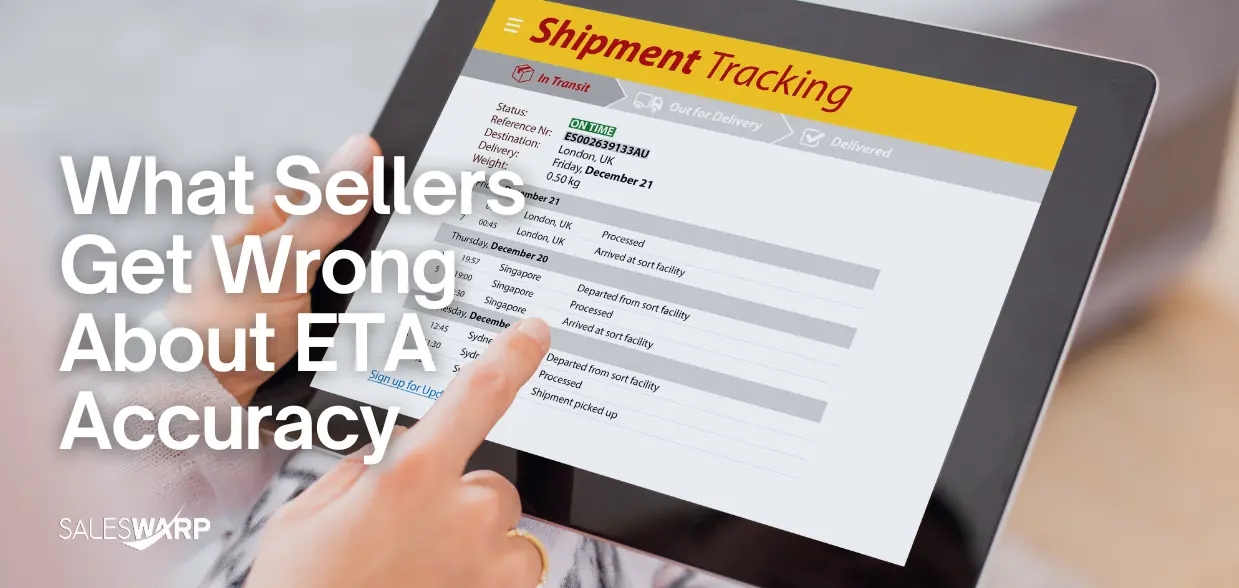What Sellers Get Wrong About ETA Accuracy

Estimated delivery times (ETAs) shape buyer expectations and influence purchasing decisions. Yet, many sellers treat them as static data instead of dynamic variables tied to fulfillment rules, carrier networks, and operational realities. This misstep leads to broken trust, negative reviews, and lost sales.
The Myth of “One-Size-Fits-All” ETAs
Too often, sellers apply the same ETA across multiple products, regions, or fulfillment methods. This shortcut may simplify backend operations, but it introduces huge accuracy gaps.
What’s missing: Regional carrier performance varies significantly. A 3-day promise from a warehouse in Texas to California might hold up—but not for a customer in rural Vermont.
Ignoring Fulfillment Rules and Inventory Realities
Sellers sometimes overlook fulfillment rules like product prep time, inventory splits across warehouses, or blackout shipping days. These overlooked elements skew ETAs, often by days.
Solution: Audit your backend rules monthly. Ensure your systems account for picking, packing, third-party warehouse handoffs, and SKU-specific lead times.
Carrier Data Isn’t Being Updated
Carrier performance isn’t static. Weather, labor shortages, and route changes impact reliability. Sellers relying on outdated transit maps or average shipping speeds may promise what carriers can’t deliver.
Fix: Leverage regional carrier data updated weekly or in real-time. Consider performance reports to adjust delivery promises dynamically.
Underestimating the Power of Lead Time Buffers
ETA anxiety is real—shoppers want confidence. Sellers that cut buffers too close to offer faster shipping risk late deliveries. On the flip side, bloated buffers scare away buyers.
Tip: A balanced buffer (e.g., 0.5–1 day based on SKU volatility and seasonality) can reduce WISMO (“Where Is My Order?”) tickets and improve customer satisfaction.
Manual Processes and Static Logic Are Holding You Back
If you’re using spreadsheets or static business logic to handle shipping timeframes, you’re already falling behind. Manual overrides and guesstimates often lead to inconsistent promises across channels.
The smarter path: Automate ETA calculations using fulfillment logic tied to real-time inventory, location, and shipping method.
Closing the Gap with SalesWarp
This is where SalesWarp shines. As a robust shipping and order management platform, it helps sellers:
- Dynamically calculate ETAs based on real-time fulfillment data
- Adjust for carrier-specific SLAs and regional performance
- Incorporate buffer rules tailored to SKUs and shipping methods
When sellers ignore the nuances of fulfillment rules, regional carriers, and inventory lead times, they risk more than just late deliveries—they erode trust. By auditing your approach and leveraging modern tools like SalesWarp, you can set accurate expectations, improve conversions, and reduce post-purchase stress.
Want help optimizing your ETA accuracy and shipping operations? Speak with a SalesWarp shipping expert today.

